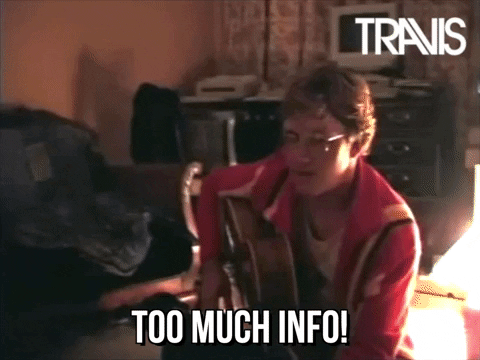You’ve put your heart and soul into crafting a sales proposal. You’ve stayed up late, had countless coffee cups, and maybe even rewritten it more times than you can count. You hit ‘send’ with a sense of accomplishment, only to hear… crickets. No response, no acknowledgement, just radio silence. It’s frustrating, right? We’ve all been there.
Welcome to the world of sales proposals, where the outcome can sometimes be as unpredictable as the weather. But here’s the good news: you’re not alone. Many of us have faced this scenario, scratching our heads and wondering what went wrong. That’s precisely why we’re here today—to unravel the mysteries of why your sales proposals might not be hitting the mark and, more importantly, how to turn the tide in your favor.
So, grab a coffee, get comfortable, and let’s dive into the fascinating world of sales proposal success.
What causes deals to lose momentum after sending a proposal?
So, what’s the deal with deals going dark post-proposal? Well, it’s a bit like the Bermuda Triangle of sales. You send out your proposal, filled with enthusiasm, but instead of the enthusiastic “Yes!” or even a polite “No,” you get… nada.
So, why does it happen?
Let’s break it down casually: Your proposal lands in your prospect’s inbox, and life takes over. They might be swamped with meetings, distracted by urgent matters, or your email could have slipped through the cracks in their overflowing inbox. It’s like trying to get someone’s attention at a crowded party – not always easy.
But that’s not all. Sometimes, your proposal might not hit the mark because it lacks that personal touch. It’s like trying to impress someone with a rehearsed speech instead of just being yourself.
People want to feel like you understand their unique needs and challenges, not like you’re sending the same proposal to everyone on your list.
So, deals go dark for various reasons, your proposal might need a sprinkle of personalization, or maybe it’s just not hitting the right notes. But don’t worry; we’ve got your back.
We’re here to shed light on these mysteries and show you how to bring those deals out of the shadows and into the spotlight.
Here are six ways proposals can act as the primary culprits behind deal delays and how to resolve these issues proactively before your team sends out another ineffective one.
6 reasons your sales proposals aren’t sealing the deal
1. Your proposal lacks the power to persuade effectively
A winning proposal is more than just a document; it’s a persuasive roadmap tailored to your prospect’s needs. It’s not just about showcasing how fantastic your solution is; it’s about demonstrating why saying “yes” to this proposal is an outstanding move for their business.
Here’s the kicker: those in charge, the decision-makers, they’re busy folks. They don’t have the luxury of time to sift through lengthy sales literature. Your team’s proposals must cut to the chase.
And that’s where the personalized proposal cover letter comes in. It’s your sales reps’ secret weapon to introduce your solution to a decision-maker who might not have been in the loop earlier. Here’s a six step approach to write a compelling cover letter that convinces your potential clients why this deal is a must-approve.
2. Your proposal includes too many unnecessary details
Too much detail can be a deal-breaker.
Why? Well, think about it from the client’s perspective. They’re busy people with a lot on their plate. When they open your business proposal and see pages upon pages of what seems like unnecessary information, it can be overwhelming. It’s like being handed a 10-course meal when you just wanted a quick snack.
So, what happens next? They might start skimming, or worse, they might put your proposal aside for later, which often turns into never. Your proposal becomes a victim of TMI (Too Much Information), and your chance of sealing the deal starts slipping away.
The key here is finding that sweet spot. Give them enough information to make an informed decision, but don’t drown them in details. Remember, clarity and relevance are your allies.
Your proposal should be like a well-edited movie – engaging, to the point, and leaving them wanting more. So, keep it concise, focus on what truly matters to your client, and watch those deals start to shine.
3. Your proposal provides a poor customer experience
Imagine you receive a beautifully wrapped gift, but when you open it, you find something entirely different from what you expected. That’s the feeling a client gets when they receive a sales proposal that’s confusing, disorganised, or simply not user-friendly.
Sales proposals are more than just documents; they’re a direct reflection of your commitment to your clients. When they’re frustrating to navigate or fail to address your client’s specific needs clearly, it’s like offering them a puzzle with missing pieces. They might not have the patience to figure it out, and that can cost you the deal.
So, in a nutshell, your sales proposals need to be a delightful experience, not a frustrating one. They should make your clients say, “Yes, this is exactly what I need,” not “What on earth are they trying to say?”
4. Your proposal lacks the consistency in the content
Imagine your sales proposal as a puzzle. Each piece of content is a crucial part of that puzzle, contributing to the bigger picture. Now, picture receiving a puzzle where some pieces fit perfectly, while others don’t even seem to belong.
Frustrating, right? That’s precisely what happens when your sales proposal lacks consistency in its content.
When your proposal is inconsistent, it’s like telling your potential client, “We’re not entirely sure what we’re offering.” It creates confusion and doubt, and it erodes trust. Inconsistent content can make it seem like different teams within your company are not on the same page, which raises concerns about your ability to deliver a cohesive and reliable solution.
To get the job done, your sales proposal needs to provide a seamless and coherent narrative. It should read like a well-structured story, where each section flows logically into the next, reinforcing your value proposition.
Consistency in content assures your clients that you have a solid grasp of their needs and that your solution is dependable.
5. Your proposal lacks insights
Did your deal suddenly fade into obscurity, or did your sales representatives simply struggle with the timing of their follow-ups?
Imagine having a superpower that lets you peek into your prospect’s world as they peruse your proposal. You’d know precisely when they opened it, which parts held their attention the longest, and how much time they invested in it overall. With this knowledge, your sales team could orchestrate their follow-ups with impeccable precision.
Picture this: the moment your prospect dives into the proposal, your sales rep swoops in with real-time answers to their questions or gentle reminders if they haven’t delved into it yet. It’s like having a conversation just when it matters most.
But it doesn’t stop there. When you possess these metrics, you can dive deeper and uncover patterns and trends that can shape your future sales strategies. It’s not just about timing; it’s about wielding valuable insights to enhance your sales process and boost your chances of success.
6. Your proposal is too perfect
Imagine your sales proposal as a pristine, flawless piece of art. Every detail meticulously crafted, every word carefully chosen—it’s practically a masterpiece. But here’s the twist: it’s so perfect that it’s intimidating.
Yes, your proposal can be too perfect. It’s like going on a date with someone who seems too good to be true—you start wondering if it’s genuine or if there’s something hidden beneath the surface.
When your proposal is too polished, it can come across as insincere. It might give the impression that you’re more interested in selling than in genuinely solving the client’s problems. It lacks the human touch, the authenticity that builds trust.
Clients are humans, after all, and they appreciate real, relatable interactions. They want to know there’s a team of people behind that proposal who genuinely care about their success.
So, while perfection is admirable, it’s essential to strike a balance. Your proposal should be professional, but it should also have a human touch. It should convey expertise but also empathy.
In other words, it should be perfect in its imperfection—a true reflection of your dedication to the client’s needs.
Conclusion
While it’s disheartening to see deals go dark, it’s also an opportunity for improvement. By addressing these common pitfalls in your sales proposals, you can increase your chances of success.
Remember, your proposal is more than just a document; it’s a persuasive tool that can make or break a deal. Tailor it, emphasize benefits, acknowledge pain points, maintain clarity, demonstrate your unique value, and don’t forget the power of follow-up.
With these fixes in place, you’ll be on your way to winning more deals and achieving greater sales success.







0 Comments